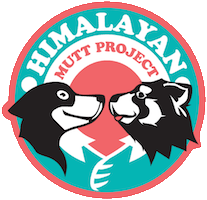Nepal's first canine distemper survey in the Himalaya
- torvaanser
- Jul 4, 2018
- 2 min read

Thanks to a grant from the National Geographic Society, we had the fantastic opportunity to build upon our neutering and anti-rabies vaccination program, and conduct Nepal's very first canine distemper survey in the Himalaya! Residents of Annapurna Conservation Area, and members of our team reported seeing dogs with signs of canine distemper over the years. Finally, this grant has enabled us to investigate distemper in the Himalaya. Last month, our team collected blood samples from over 80 dogs across Nepal's Upper Manang District for analysis, results from the study will be released later this year. (Below: Ajay Narsingh Rana (left) and Mukhiya Gotame round up a group of young pups in Bhraka village)

Canine distemper is an infectious disease known to cause high mortalities in susceptible wildlife. The presence of canine distemper in the Himalaya threatens populations of native animals, like Himalayan wolves, Golden jackals, Yellow-throated martens, Pallas's cat, Snow leopards, and Red pandas. By the time the disease is detected in wildlife, it is often too late. This is why prevention is better than cure. Domestic dogs are the main carriers of the virus, and early detection can save wildlife before it is too late. At the end of our month-long effort in Manang, and at the request of residents, our vets also neutered 24 animals over two days. This brings the total number of animals we have neutered in Manang to 471 - we have achieved this because of you. (Below: Chua Zhiyu, and Dr. Tharm Sook Keng prepare a dog for surgery)

We would like thank members of the Manang community who went the extra mile to facilitate our research and neutering efforts: Buchung Gurung (Pisang), Karma Tsering (Bhraka), Chungda Jamba Gurung (Ngarwal), Tsering Lobsang Gurung (Manang), and countless community volunteers who supported us. Our success in the Himalaya was possible because of the tenacity and joy brought by our veterinary volunteers who merge a passion for the great outdoors with the skills needed to do our important work. We'd also like to acknowledge Third Pole Conservation (Nepal), Annapurna Conservation Area Project (Nepal), Animal Nepal (Kathmandu), Island Veterinary Clinic (Singapore), The Animal Clinic (Singapore), CT Vet Clinic & Surgery (Malaysia), and Phatcathaus (Malaysia) for bringing our work together by sharing services and/or medical equipment.
If you haven't already done so, subscribe to our blog to receive the latest updates from this field trip! We have lots of stories to share with you over the next few blog posts!
































Comments